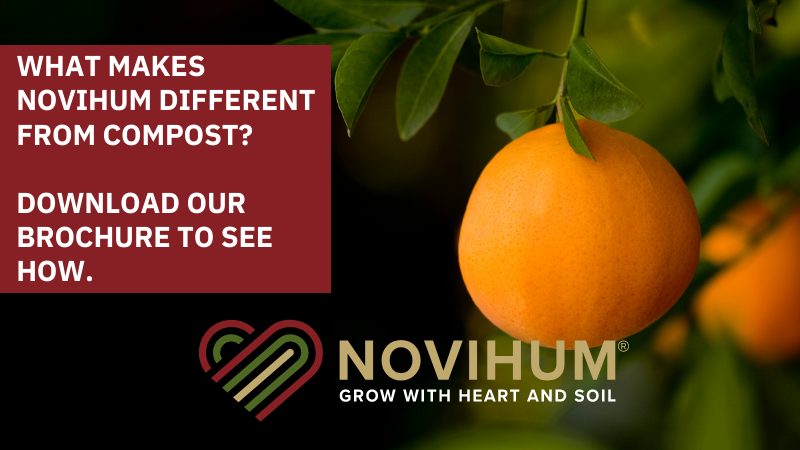Survey: Extreme Weather Pouring on the Pain for Many in the Fruit Industry
In displays of misery loving company, growers typically find weather stories captivating. Respondents to American Fruit Grower’s annual State of the Industry survey have plenty to share about their weather-related experiences last year, largely because of an unimaginable heat dome in the Pacific Northwest (PNW), an ever-worsening drought in California, and early- and late-season frosts all across the country.
Extreme Heat
More growers (60%) were affected at least mildly by extreme heat than any other weather event, including frost (59%). Most of the affliction occurred in the PNW during an historical heat dome, which delivered record-breaking temperatures throughout the summer.
Tree fruit growers in Washington State and Oregon offer the following descriptions of their seasons:
“It was 114°F in June and hot all summer into harvest.”
“The heat dome and, later, excessive heat days adversely affected some crops and made routine orchard maintenance difficult.”
“The crop never completely recovered.”
Growers outside the PNW were affected by high temperatures as well. In Michigan, a nut grower recalls the damaging effects of heat in the spring, followed by a freeze. A pome fruit grower in the state mentions a fall spike in temperature that was a deterrent to finishing off early -season apple varieties.
Drought
While the heat dome was centered north of California, the state continued to suffer from an ever-worsening drought and its usual high temperatures.
“The drought caused lighter crops,” a California nut grower says.
“Lack of the usual rainfall caused us to irrigate twice, doubling our water and energy bills,” a California apple grower says.
“Trees need consistent water due to drought,” a California grower says. “We got some days close to 120°F last fall that stunted our citrus fruit size.”
High heat early in the season affected crop set and size, a California grape grower says.

Frosts and Freezes
In terms of severe damage, meaning significant loss of crops, frost, at 10%, was even worse than the extreme heat, at 7%. Out-of-season freezes also resulted in severe damage for 7% of growers.
“We had a late frost and lost 100% of our peach crop and 75% of our apple crop,” a Kansas grower says.
For a New Mexico tree fruit grower, a late spring frost meant the loss of his early bloomers.
“When we have an early spring, the vines come out and then the late frost knocks them back,” a North Carolina muscadine grower says.
Freezes were nearly as impactful. Extreme cold in February of 2021 destroyed a Kansas grower’s entire peach crop. Hard freezes during blossom time killed a Pennsylvania grower’s cherry crop.
“We had two separate cold events that significantly damaged many of our crops,” an Oklahoma stone fruit grower says. “One was in February, when temperatures dropped into the negatives, so probably nothing could have been done for crop protection. The other event was in late April, and we likely could have prevented more damage if more resources had been available. When we contacted the helicopter company, all but one were already booked to be flying over pecan orchards.”
Down in Florida, a winter freeze hurt orange trees badly and curtailed bloom, according to one grower.
For a California walnut grower, a late-season postharvest freeze resulted in 30% to 40% tissue damage in one particular 40-acre block.
Extreme Rain
Rain stretched out over the season, causing fruit to be soft and have reversion, a Georgia berry grower says.
“The season started very hot,” a West Virginia grower says. “Then rainy season set in and caused poor pollination.”
For a Pennsylvania grower, there was too much rain and not enough heat, which affected the flavor of his berries. Meanwhile in Alaska, a tremendous amount of rain brought on botrytis in berries.
Fall hurricanes, meanwhile, can wreak havoc on U-pick weekends, according to a New Jersey apple grower “It rained out a couple of big days,” he says.
“A heavy rain in early September ended our peach season a little early and caused cracking on ‘Gala’ apples,” a Pennsylvania grower adds.
“It was very rainy throughout the whole season,” a New York nut grower says. “This may be becoming a pattern, with occasional very dry years.”
Wildfire/Smoke Damage
“We had some wildfire smoke in 2021,” an Oregon pome fruit grower says, “but not to the extent of 2020.”
“Smoke from the California fires filtered sunlight for about three weeks, and the season progressed slower,” a grape grower from the state says.
Hail and High Winds
“A hailstorm in July knocked substantial berries off the bushes, and we lost about 10% to 15% in the prime of harvest season,” a New Hampshire grower says.
“I had a severe windstorm on Aug. 7, 2021,” a Nebraska grape grower says. “There were sustained 75 mph winds for at least 45 minutes. Several line posts were broken at ground level. There was hail with the storm. We lost one-third of the crop.”
“We had a freeze and a hailstorm,” a Florida citrus and berry grower says. “In blueberries, the hail seriously impacted our bottom line.”










